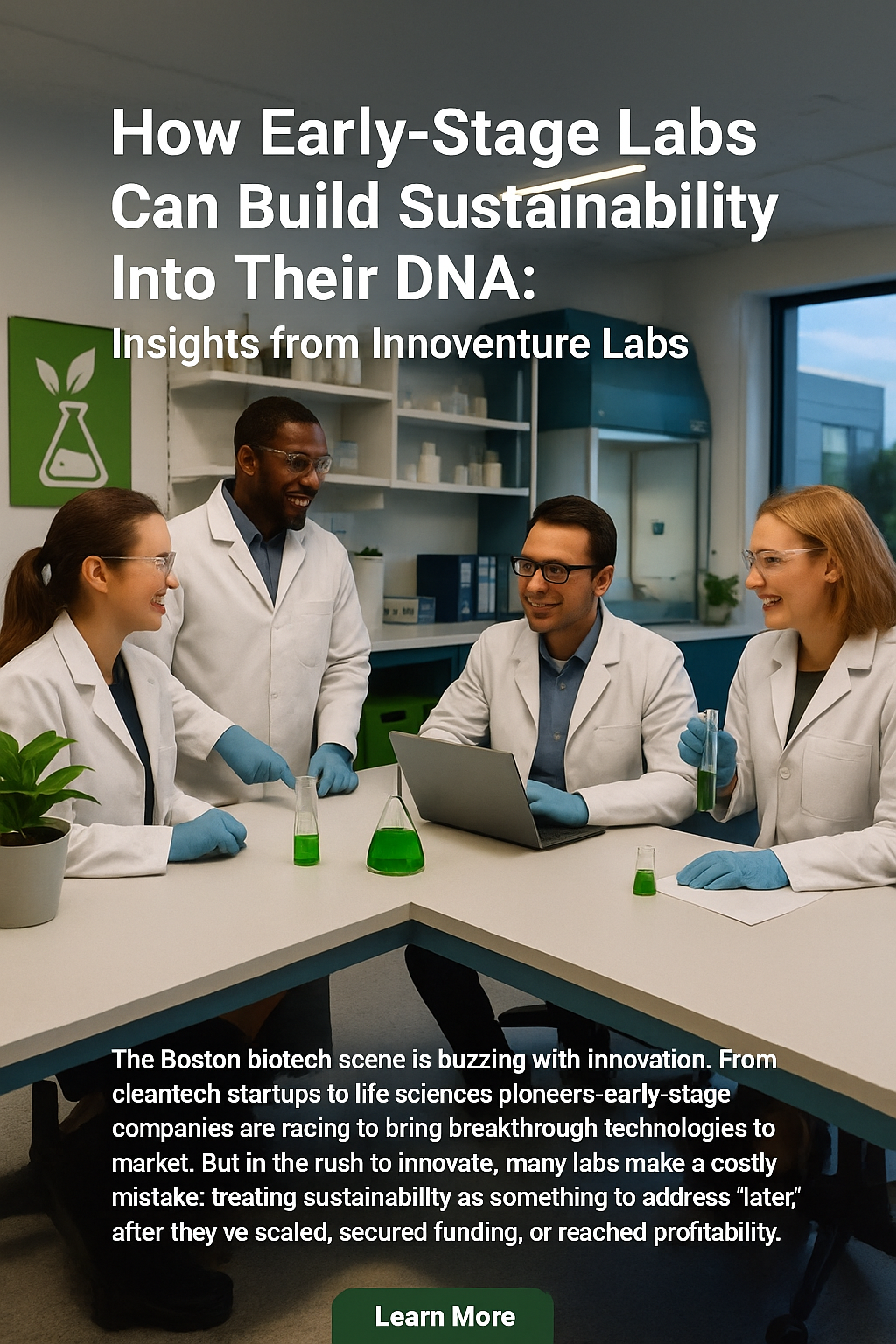Reducing Lab Waste: A Guide to Plastic Circularity
Reducing Lab Waste: A Guide to Plastic Circularity

Labs consume resources at an alarming rate. They use five times more water and ten times more energy than standard office buildings. They also generate ten times more waste. This environmental impact demands urgent attention.
Laboratories are resource-intensive environments, consuming five times more water and ten times more energy than standard office buildings. They also generate ten times more waste. This significant environmental impact calls for urgent attention and innovative solutions.
One critical area for improvement is plastic use. Labs generate substantial plastic waste, much of which ends up in landfills or incinerators. However, a growing movement towards "plastic circularity" offers promising solutions to this pressing issue.
What is Plastic Circularity?
Plastic circularity refers to keeping plastic materials in use for as long as possible. It involves reducing, reusing, and recycling plastic to minimize waste and environmental impact. In labs, this concept is gaining traction as a key sustainability strategy.
Implementing Plastic Circularity in Labs:
Specialized Recycling Services
Innovative companies are now offering specialized recycling services tailored for lab plastics. Polycarbin, a leader in this field, collects used lab plastics, processes them, and transforms them into new products.
For example, pipette tips, a common single-use plastic in labs, can now be recycled. Polycarbin collects these used pipettes, processes them, and turns them into new boxes or other lab equipment. This process significantly reduces plastic waste and conserves resources.
Proper Segregation of Plastics
Effective plastic circularity hinges on proper waste segregation. Labs must distinguish between contaminated and non-contaminated plastics. Contaminated plastics, often biohazardous, must be disposed of in red bags for safety reasons. However, non-contaminated plastics can be recycled.
Lab managers should implement clear guidelines for waste segregation. Training staff in proper pipette technique can minimize contamination, increasing the amount of recyclable plastic. Simple changes in daily practices can lead to substantial reductions in red bag waste, which is typically the most expensive to dispose of.
Switching to Reusable Alternatives
While recycling is crucial, reducing plastic use altogether is even more effective. Labs can consider switching to reusable glass containers where possible. Although initial costs may be higher, the long-term benefits are significant. Glass containers can be cleaned and reused multiple times, drastically cutting down on single-use plastic waste.
Exploring Non-Fossil Fuel Based Plastics
Some companies are developing alternatives to traditional petroleum-based plastics. For example, Eppendorf has introduced a non-fossil fuel based plastic for lab equipment. While currently more expensive, these alternatives represent a promising step towards more sustainable lab practices.
Improving Pipette Technique
Proper pipette technique is often overlooked but crucial for minimizing contamination and waste. Training lab staff in correct pipette use can significantly reduce the amount of plastic that ends up in red bags. This not only decreases waste but also cuts down on expensive disposal costs.
Challenges and Misconceptions
Implementing plastic circularity in labs isn't without challenges. Many researchers fear that changing established practices might compromise their results. This resistance to change is a significant barrier to adopting more sustainable practices.
However, extensive testing has shown that many sustainability measures, such as adjusting freezer temperatures or implementing recycling programs, do not impact scientific outcomes. The key is to introduce changes thoughtfully and at appropriate stages of research.
Another common misconception is that sustainability measures are always expensive or disruptive. In reality, many initiatives, such as implementing a glove recycling program or adding a compost bin to the lab kitchen, are low-cost and easy to implement.
The Broader Impact of Plastic Circularity
The benefits of plastic circularity extend beyond individual labs. Waste haulers are evolving their practices in response to this trend. Instead of sending red bag waste to incinerators, some are now processing it into plastic pellets used to make items like park benches. This shift towards circularity is creating new industries and reducing overall environmental impact.
Moreover, plastic circularity in labs can inspire wider adoption of sustainable practices. As labs demonstrate the feasibility and benefits of these approaches, other industries may follow suit, amplifying the positive environmental impact.
Looking Ahead: The Future of Lab Sustainability
While plastic circularity is a crucial step, it's part of a broader movement towards comprehensive lab sustainability. Future advancements in green chemistry, energy-efficient equipment, and water conservation techniques promise to further reduce labs' environmental footprint.
For instance, the development of more efficient autoclaves could significantly reduce water and energy use. Some new models are up to 80% more efficient than older versions, representing a major leap in sustainability.
Conclusion
Plastic circularity in labs is not just an environmental imperative; it's a practical and achievable goal. By implementing specialized recycling, proper waste segregation, reusable alternatives, and innovative materials, labs can dramatically reduce their plastic waste.
The journey towards sustainability in labs is ongoing. It requires a willingness to question established practices, embrace innovation, and prioritize environmental impact alongside scientific outcomes. As one sustainability expert poignantly noted, showing a picture of his grandchildren, "That's why I do this." The stakes are high, but so is the potential for positive change.
Labs have the power to lead by example, demonstrating that cutting-edge science and sustainability can go hand in hand. By adopting plastic circularity and other sustainable practices, labs can continue their crucial work while significantly reducing their environmental impact. The future of our planet may well depend on it.
.jpg)

